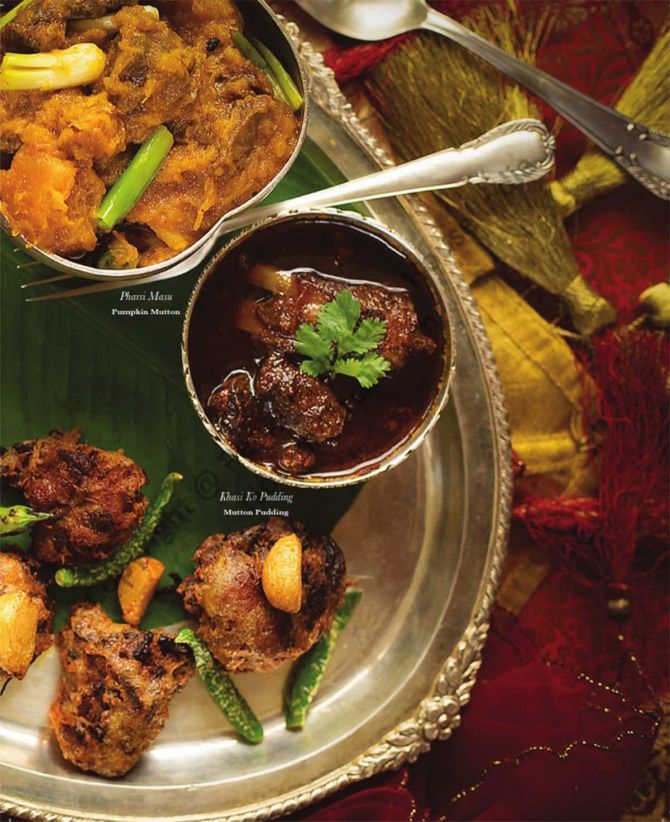 | « Back to article | Print this article |
The Ranas ruled Nepal for a little over a century, as prime ministers, and are famous to date for their stucco, colonial style palaces, beautifully manicured gardens, magnificent jewellery, palace intrigues and autocratic rule.
This glamorous, colourful regime that shaped the history of the country for 104 years, imported ideas concerning architecture, dress and even administration from far off Europe but in the field of culinary art they did not stray too far from their homeland.
The local cuisine was influenced to a certain extent by the khansamas (cooks) brought in from Mughal India after the loot of Lucknow during Jung Bahadur's time.
Since then the khansamas and the Nepalese bajaes and bajais (Brahmin men and women) worked in tandem, though in separate kitchens, perfecting a style of fusion cuisine that has become famous being unique in its Rana flavour.
Coming to the meal patterns of the Rana households, breakfast, if taken at all, was not common.
Lunch, which was the main meal, was usually had at 10 am in the traditional junar ko bhancha or room adjoining the kitchen.
Everyone would be seated on the floor on wooden pirkas (flat stools) and would be served in traditional thaals or chaapris (platters) by the bajaes and bajais on a khatiya (a low wooden table).
A typical meal consisted of rice, lentils, meat and a variety of vegetables and pickles. Fruit and dessert would usually follow a meal.
Teatime was 3 pm where everyone partook of khane kura usually cheura (beaten rice) accompanied with meat and vegetables and sweetmeats.
Dinner was usually at 6 or 7 pm served in the rooms upstairs with a variety of rotis, cheura meat and vegetables.
If rice was being served, it had to be partaken of in the junar ko bhancha again.
No one remembers snacking in between meals! On the whole, the everyday meals were very well balanced and nutritious, catering to all types of tastes.
Rohini Rana in The Rana Cookbook shares vignettes of Rana life and the gustatory indulgences that occurred at Nepali palaces.
The fat glossy volume is packed with several unique recipes from Nepal's royals. One among them is Pharsi Masu or Pumpkin Mutton.
Bhogate Sande Ko Dhania Ko Achar Ma or Pomelo In Coriander Chutney is a fresh salad, usually served with lunch.

Pharsi Masu or Pumpkin Mutton
The credit for this recipe goes to Dr Niti Rana, whose mother, Kanwarani Preeti Prabha Rajya Laxmi Singh of Pawayan, opened the first Nepali durbari style restaurant Sunkosi, which was famous for its delicious cuisine.
His Majesty King Birendra Bir Bikram Shah Deva and Her Majesty Queen Aishwarya Rajya Laxmi Shah were known to walk out of the palace gates and enjoy meals in this restaurant.
Serves: 3-4
Ingredients
For marinating the mutton
For the pumpkin
Method

Bhogate Sande Ko Dhania Ko Achar Ma or Pomelo in Coriander Chutney
Serves: 6
Ingredients
Method
Note: For a sugar-free salad, replace the castor sugar with honey or a sugar equivalent like stevia.
Excerpted from The Rana Cookbook: Recipes from the Palaces of Nepal by Rohini Rana with kind permission from the publishers Penguin Random House India.
